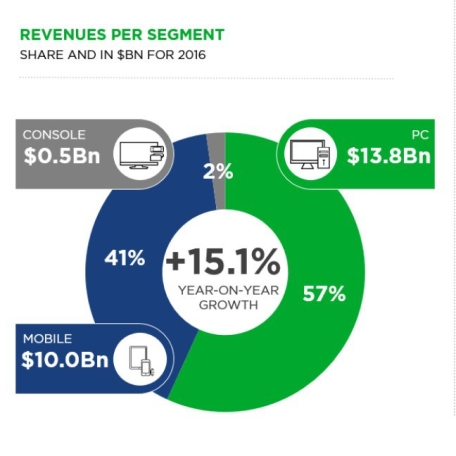China has the largest, highest grossing and most profitable computer and video game market in the world since 2015.
The computer and video game industry does not follow a self-regulatory system like most countries. Instead, the industry is regulated by two government bodies: – the Ministry of Culture (MOC) and the State of Administration, Press, Publication, Radio, Film, and Television (SAPPRFT). The leading regulator is MOC which was established in September 1954, and recently dissolved on March 19th, 2018. Due to the restrictions of laws and strict policies in China, the government-run regulatory agencies such as MOC help keep gaming content within the boundaries of the law and Chinese culture. The new regulations for 2017 were set to make the industry safer and better controlled with rules such as section 2.2 from the ‘Notice’ of the regulation report stating that it is a legal requirement for the online games businesses to obtain a license from the authorities to be able to operate. Additionally, regulations in China show that content and gameplay is both monitored and controlled by the regulatory services run by the government.
According to Atomico (a London-based venture capital firm), China is considered the “gamer capital of the world” which is a place previously held by the US. Research into the computer and video game industry in China has shown that gamers in China generated $24.4 billion of the industry’s $101.1 billion global revenue in 2016. The Atomico report research app Annie states that as much as 93% of all the money spent by Chinese gamers go to titles developed by Chinese based companies. Additionally, research suggests that currently, China accounts for 1/4 of the global computer and video game industry’s revenue. According to the statistics and figures gathered and provided by Statistica, gamers in China spent 15% of their leisure time playing computer or video games in 2016. While researching the industry in China, I came across a 2016 computer and video game industry report for the Chinese sector. According to Newzoo (a leading provider of market intelligence covering the global games market), in 2016 there were 558.5 million recorded gamers in China and 36% spend money on the computer or video games. Additionally, the report showed that in 2016 China had an online population of 788.8 million people and of that, 71/% played computer or video games. Newzoo also reported that the number of gamers in China was 199.8 million and on average each gamer spent $122 a year. In the chart below you can see a breakdown of the $24.4 billion total revenue for the Chinese computer and video game industry in 2016.

Sourced image from the Newzoo website report – link in references.
In terms of comparison, there are many key features that differ between the US and Chinese sectors of the computer and video game industry. There are also a few aspects in which they are similar as well.
The main difference between the Global South and Global North that I have selected within the industry I have chosen is the ways in which they are regulated and how they operate because of their regulations. The US must abide by laws and censorship acts etc, but the self-regulation allows for a large amount of content control and freedom for each organisation under the US industry making it easier for those organisations to do business. This differs largely from the Chinese regulation which is closely regulated by the Chinese government and therefore the organisations have a lot less freedom than the western US. China is known for its communist approach and having many of its platforms regulated and overseen by the Chinese government and so it is not surprising to find that the government oversees the computer and video game industry as well.
Previously, I mentioned the 2016 global revenue of the industry to be $101.1 billion. If you compare the revenue for this generated by the two countries, the US generated $30.4 billion which means that China fell behind by $6 billion. This statistic is surprising as China was named the top of the games industry and so would be expected to have gained the most revenue in 2016. Additionally, 56% of US gamers spent money on US developed games in 2016 which is far less than China’s 93%. Due to China being very strict with allowing access or integration of western gaming this statistic is not surprising to see. Although they differ widely in their freedom of content and regulation policies, one thing they do both have in common is popularity. Looking at the data I have discussed each country, although they operate very differently, has high numbers of gamers out of their population. They both are in the highest grossing section of the industry and have similar forms of gameplay available.
In conclusion, the US and China operate in very different ways due to their regulation but, they are leading the industry and are both considered to be at the very top of the industry.
References:
- http://www.theesa.com/article/us-video-game-industry-revenue-reaches-36-billion-2017/
- https://en.wikipedia.org/wiki/Video_gaming_in_the_United_States
- http://www.theesa.com/article/u-s-video-game-industrys-economic-impact/
- https://www.out-law.com/page-5810
- http://www.theesa.com/public-policy/government-affairs/
- https://en.wikipedia.org/wiki/Video_gaming_in_China
- https://www.bloomberg.com/news/articles/2017-06-01/china-just-became-the-games-industry-capital-of-the-world
- http://daxueconsulting.com/video-games-market-in-china/
- https://www.statista.com/statistics/293304/number-video-gamers/
- https://newzoo.com/insights/infographics/chinese-games-market-2016/
- https://zhugeex.com/2016/12/chinas-new-online-gaming-regulations/
- https://en.wikipedia.org/wiki/Ministry_of_Culture_of_the_People%27s_Republic_of_China

Leave a comment